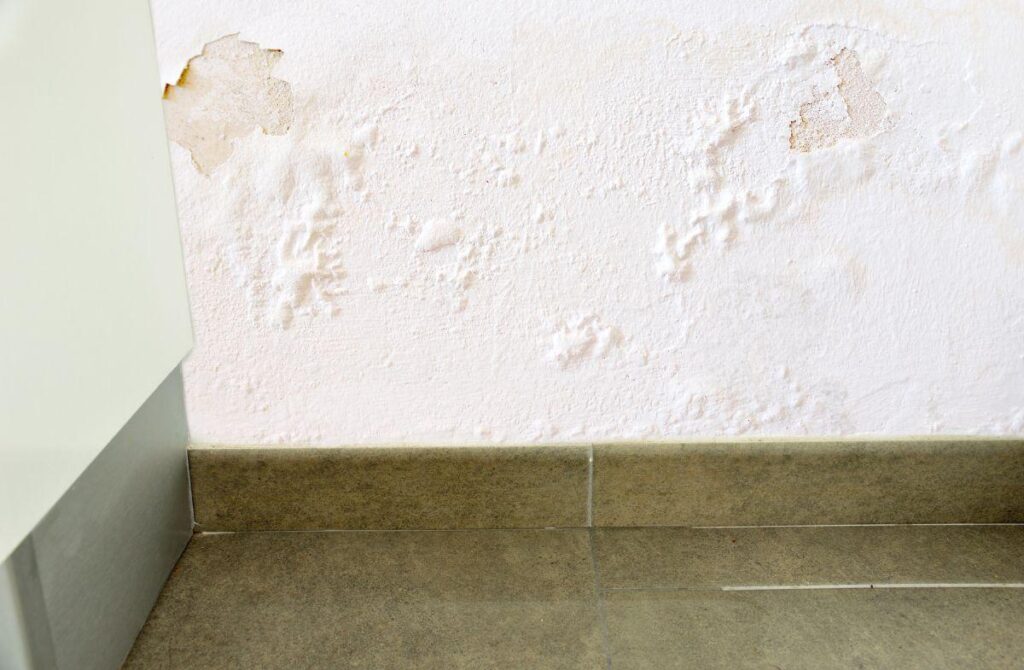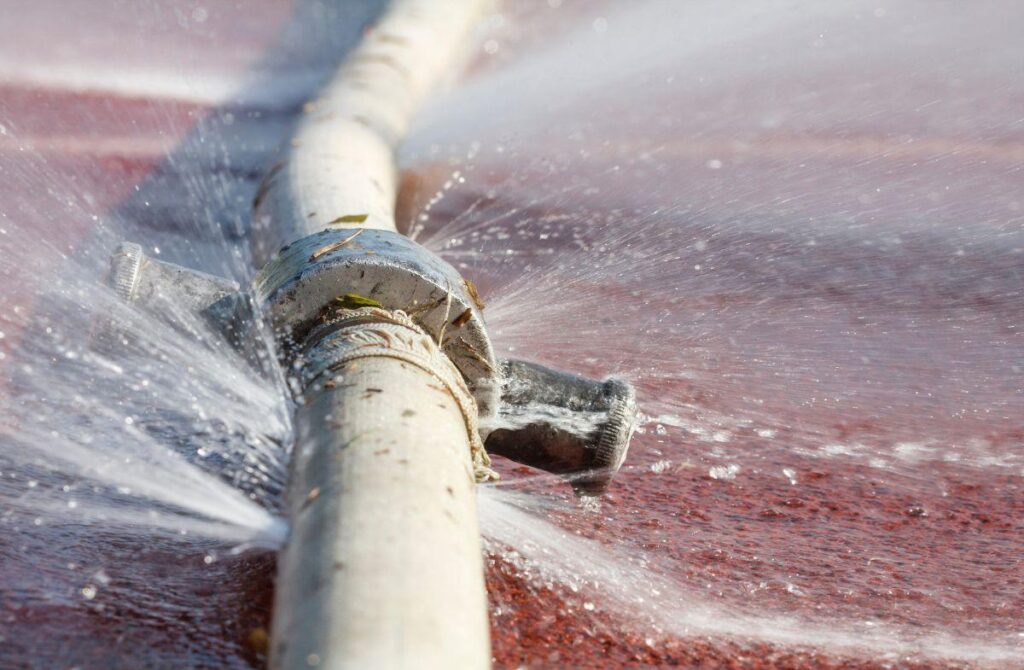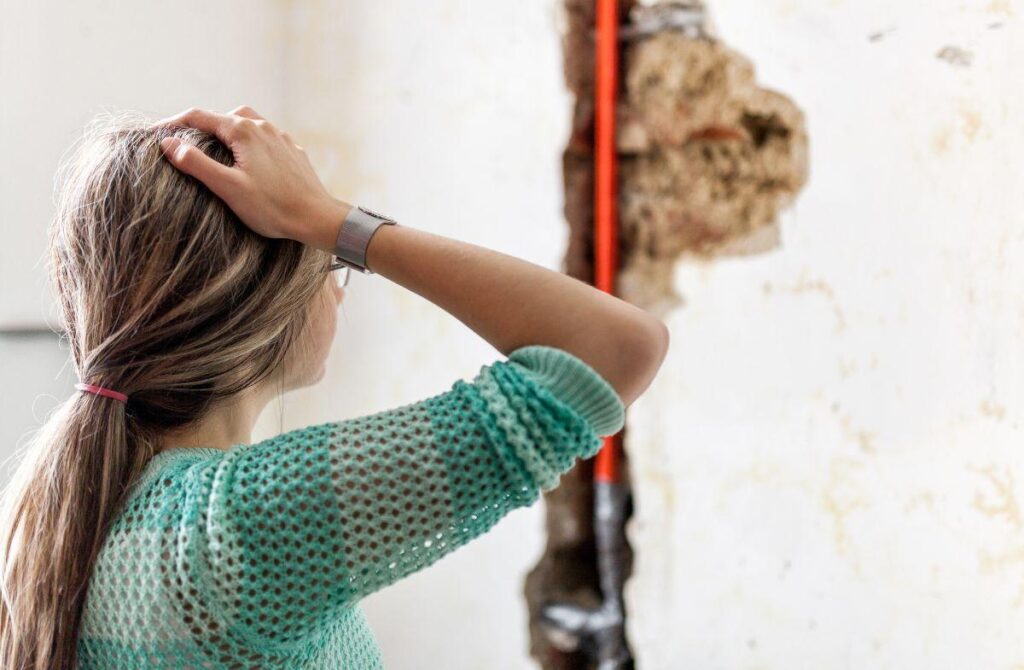
Water is essential for every household, but it can also be destructive when left unmanaged in the wrong places.
Leaking water through walls is a good example of this.
Excess moisture in your walls is often absorbed into the flooring, drywall, ceilings, wooden support beams and sheetrock, which can damage the overall structural integrity of your property. This water problem can also lead to the growth of mould and efflorescence which can then cause health and aesthetic issues.
If not immediately addressed, leaking water through walls can result in expensive repairs and restoration costs. That’s why it’s crucial to proactively solve and prevent water leaks with the right solutions.
Read on to learn how to stop water leakage in your wall.

Causes of water leaking through walls
Water damage is often caused by obvious reasons such as floods, burst pipes and sewage backups.
Unlike other causes of water ingression, sources of water leaks behind walls can’t easily be detected. Nevertheless, there are major sources of water leaking through walls that you can take note of and observe:
- Defective building materials or poor construction
Faulty construction or the degradation of building materials can compromise the quality of your walls and overall structure, allowing water to easily infiltrate your walls.
- Interior plumbing systems
Water leaking through walls can be a result of broken plumbing inside your house. To check, turn off all faucets and other appliances that use water in your home. Write down the current number on the water metre and compare if it has increased after three hours. If the number has risen, it’s likely that your indoor plumbing has a problem.
- Exterior plumbing systems
If interior plumbing isn’t the cause of water leaking, you may also examine your exterior plumbing systems for problems. Clogged downpipes and gutters, compromised caulking, poor flashing on vents, broken sprinkler pipes and sloping down drains can be sources of leaking water through your walls.
Addressing the problem of water leaking through walls
The solution you need for water leaking through walls depends on what’s causing the problem.
Issues with your interior plumbing systems and building materials may require seeking the help of building professionals to cut the wall open and replace damaged sections. In this case, you will also have to patch, sand, prime and paint the walls all over again.
On the other hand, cleaning clogged gutters and downpipes, scraping old caulking, putting on new flashing or replacing faulty sprinkler systems are some of the things you can do to address problems with your exterior plumbing.
As a preventive measure, you can also prioritise waterproofing brick or block retaining walls prior to backfill. At Scientific Waterproofing Products (SWP), we have a range of Drizoro products that you can use to strengthen and waterproof your walls.

How to waterproof your walls
SWP’s MAXREST, MAXJOINT ELASTIC, MAXSEAL FLEX, MAXSEAL FLEX M and MAXMESH solutions are all ideal for stopping and preventing water from leaking through your walls, protecting your home against costly water damages.
Here’s how you can use them to protect your walls:
- Prepare the area to be treated by removing any loose materials, ensuring a clean and sound surface. If rendered, remove all render.
- Any damaged areas and missing mortar must be repaired using MAXREST.
- When sealing joints:
- a. Cold joints must be coated with MAXSEAL FLEX or MAXSEAL FLEX M and reinforced with MAXMESH. The MAXMESH is applied in the first coat while still wet. The second coat is applied directly over the top.
- b. Expansion joints must be filled with MAXJOINT ELASTIC. Once cured, coat with MAXSEAL FLEX or MAXSEAL FLEX M and bandage with MAXMESH.
- The entire wall must be coated with MAXSEAL FLEX or MAXSEAL FLEX M. Make sure to apply two coats as per the product technical instructions.
- Allow 5 days to cure before backfilling. MAXSEAL products require no protection from the backfilling process. However, due care must be taken to ensure that the fill does not contain objects that would damage the wall, half bricks and blocks, etc.
- Do not place any plastic or protection board. Drainage cells or geofabric are acceptable.
- As with all retaining walls, drainage must still be installed.
If you’d like further guidance on our waterproofing products, just speak to your local Australian waterproofing specialists.
Get the best wall waterproofing solutions today
At Scientific Waterproofing Products, our team is here to provide you with the right waterproofing for your unique situation. We offer a wide range of Drizoro cement-based waterproof coatings for all of your maintenance and restoration requirements.
If you’ve got any questions or issues around waterproofing, or you’d like to find out which product is best for your needs, contact us today!
You can also check out a list of local Drizoro resellers and applicators here.
As always, SWP is committed to providing the right waterproofing solution for any water-related problem or application.